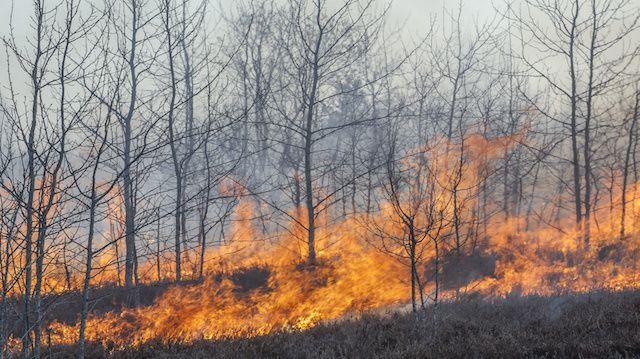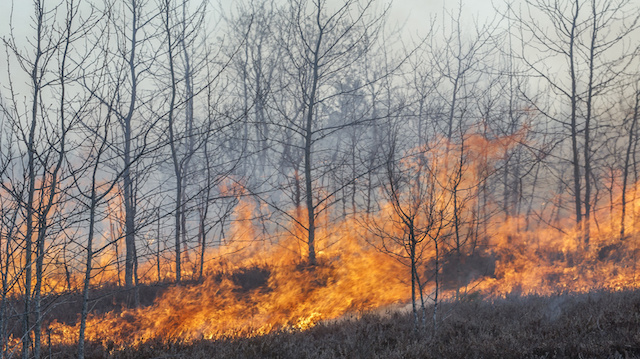
Structure-leveling hurricanes, extreme seasonality, tornadoes where they “shouldn’t” be, drought, disease, the list goes on. We’re experiencing bigger and more dangerous natural disasters, and according to experts, the majority of them are related to climate change.
Earlier this year, the United Nations Office for Disaster Risk Reduction published a report outlining climate-related disasters. It’s perhaps unsurprising the U.N. found that disasters caused by our climate dominate risk management organizations’ focus. It seems like natural disasters are continually in the news.
“Despite many successes and greatly improved performance in disaster management, it is sobering to note that 700,000 people have died in disaster events over the last 10 years,” said Margareta Wahlstrom, head of the U.N. Office for Disaster Risk Reduction. “A total of 1.7 billion people have had their lives disrupted in some way. It is a great concern that economic losses in major reported disaster events come to $1.4 trillion.” There was no mention of the impact of minor disasters, however.
The press release from the U.N. continues with some staggering statistics: “70 percent of deaths [from natural disasters] are caused by earthquakes, [and] climate-related disasters now account for over 80 percent of all disaster events.” As many as 155 million people have been displaced either in the short or long term as a result of natural disasters since 2008.
In September, the International Federation of Red Cross and Red Crescent Societies (IFRC) released its “2015 World Disasters Report” with evidence that confirmed the report from the United Nations. According to the report, in 2014, 315 natural disasters occurred across the globe, affecting 94 countries. Although this number is 17 percent below average and the lowest in a decade, about 107 million people were affected by disasters, signaling more extreme conditions. Sixty-three percent of all disaster-related deaths resulted from landslides and floods alone.
Climate-related natural disasters go beyond huge storms like Katrina, although we tend to think of them in those terms. For example, Oxfam International compiled a list of five natural disasters that signal something is wrong with the world’s climate. They might not be what you expect:
- Wildfires in Australia: From August through November 2013, more than 100 wildfires swept across New South Wales, making the season one of the most severe on record.
- Drought in Russia: In 2010 and 2012, 22 regions across Russia lost crops due to droughts. In 20 of the regions, the government declared a state of emergency.
- Coffee rust in Guatemala: Coffee lovers have lamented coffee rust in Central America, which is due to a fungal disease that proliferates in warmer temperatures. Even coffee farms at higher altitudes have been affected.
- Floods in Pakistan: August 2013 saw unprecedented floods in a fifth of the country. Around 20 million people were affected.
- Typhoon in the Philippines: In November 2013, 11.3 million people were affected by Typhoon Haiyan, the strongest typhoon ever to make landfall.
 Despite the fact that this list is a couple of years old, it gives us a very important glimpse of the scope of disasters caused by climate change. Especially relevant now is Storm Desmond, which is flooding parts of the United Kingdom and is already costing people millions in damages.
Despite the fact that this list is a couple of years old, it gives us a very important glimpse of the scope of disasters caused by climate change. Especially relevant now is Storm Desmond, which is flooding parts of the United Kingdom and is already costing people millions in damages.
All of this isn’t new, though. Scientists have been warning us for years that climate change would lead to more extreme weather and higher costs, with more people affected. You’ve probably seen it on a smaller scale where you live: a heavier rainy season, a drought, unseasonable temperatures, a tornado or a lightning storm when you’d least expect it. Climate change is real, and now we’re reaping what we sowed.
What weather changes have you noticed where you live?
—Megan Winkler
Megan Winkler is an author, historian, Neurosculpting® meditation coach, certified nutritional consultant and DIY diva. When she’s not writing or teaching a class, Megan can be found in the water, on a yoga mat, learning a new instrument or singing karaoke. Her passion for a healthy mind-body-spirit relationship motivates her to explore all the natural world has to offer.
Sources:
http://www.unisdr.org/files/42862_2015no05.pdf
http://www.ifrc.org/en/news-and-media/press-releases/general/wdr-press-release
http://reliefweb.int/sites/reliefweb.int/files/resources/1293600-World-Disasters-Report-2015_en.pdf
https://www.oxfam.org/en/campaigns/5-natural-disasters-beg-climate-action

